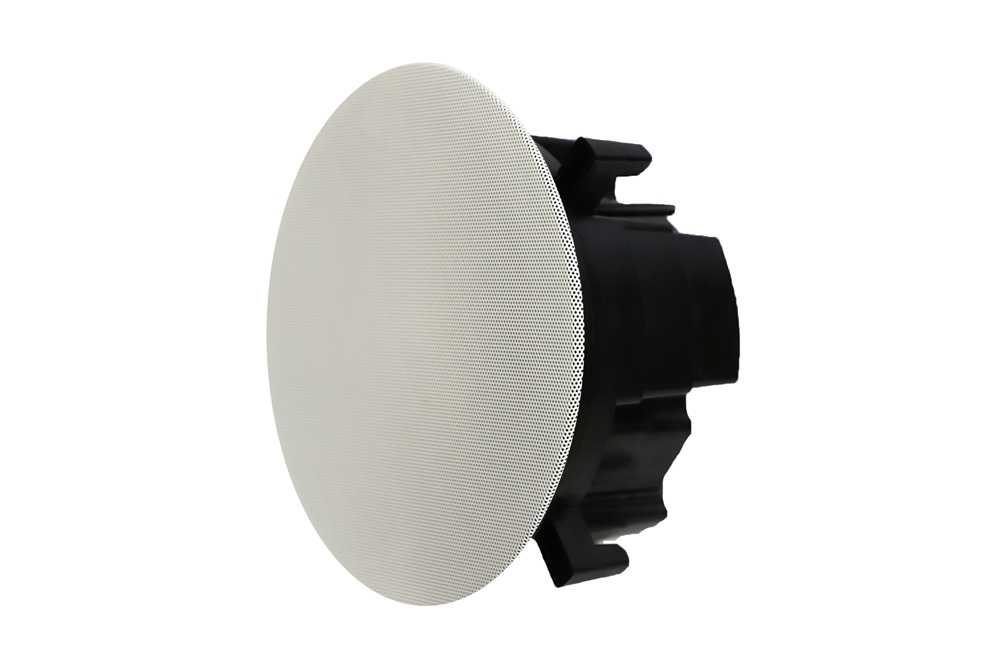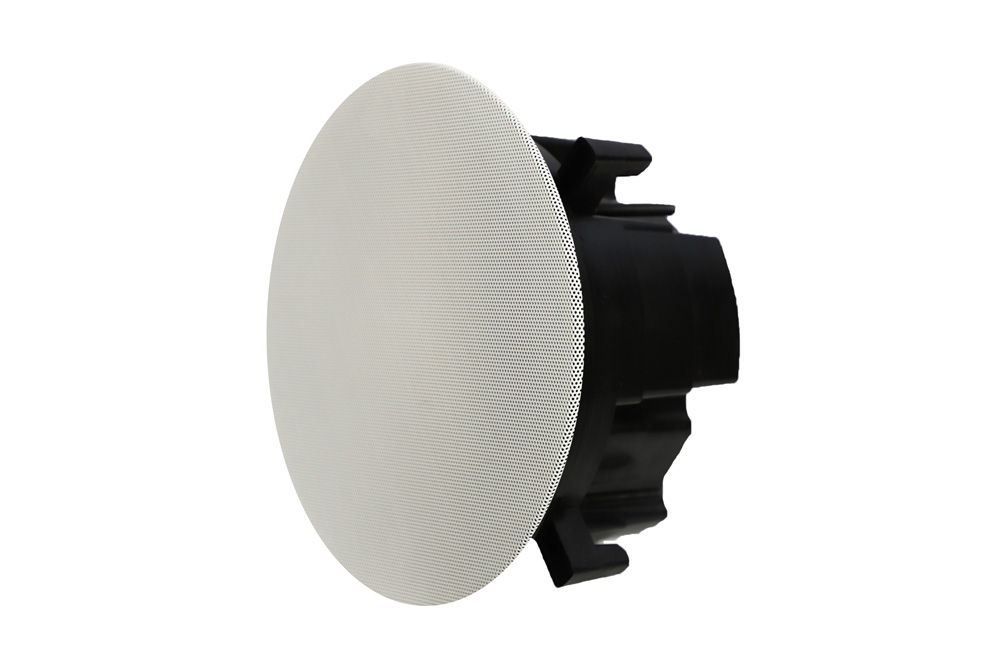Axiom's newest product is the M3 in-ceiling speaker. It's a dual solution-oriented product: you can use it anywhere in your home where only an in-ceiling speaker is going to work with your decor, or you can prepare yourself for the most exciting development in home theater in years: the imminent release of Dolby Atmos, which requires in-ceiling speakers to add height channels to your surround sound experience. The M3 in-ceiling is perfect for both applications: it has high power handling, balanced linear performance, and good bass so a subwoofer is not required. It's an audiophile's dream in-ceiling speaker.
The Design
The new M3 In-Ceiling speaker is based on our award-winning M3 bookshelf speaker. It has the same woofer as the stand-alone product: a 6.5-inch woofer with a die-cast basket. The difference is in the construction of the tweeter. The tweeter is mounted above and in front of the woofer, so we couldn't use the same ferrite-magnet based tweeter as our stand-alone speaker: it's so large it would cover almost the entire woofer! So we developed a new tweeter using the same dome and same wave guide as the latest Axiom tweeter (the one we launched for our V4 series.) But for this application we've gone to something called a neodymium magnet which is considerably smaller and has a much more concentrated magnetic field. We get the same sensitivity and the same output, but in a much smaller package.

M3 In Ceiling Speaker
One thing that's unique about our in-ceiling compared to many products on the market is the integrated back box. We've already had customers ask "Why don't you just leave the back of the speaker open so that you can use the volume in the cavity where you mount the speaker?" There are a couple of issues with that from our perspective:
- We don't know how big that cavity may be you're going to have behind it.
- We don't know what kind of bass you're going to get out of that space.
Our customers know that sound quality is our first priority, always, so we cannot have these unknown variables in an Axiom product. For example, if you were to put this speaker with no back box in a vaulted ceiling with huge attic or cavity behind it, you would seriously degrade the power handling capability of the woofer, because that woofer is now essentially unloaded by the huge volume sitting behind it. That’s why we insist on a backing box: we know exactly how the speaker sounds in all locations, and you get the high-end performance you are looking for.
Many Uses
Conventionally people used to think of in-ceiling speakers as products to be used for background music in hallways and kitchens, and certainly they can be used for that purpose: they're perfect for that sort of application. Typically in a home theater environment, in-ceiling speakers are also sometimes used for rear channels in place of a wall-mounted product (like our QS4 and QS8 surround speaker products.) But we're on the cusp of the new Dolby Atmos system.

This system was developed a few years ago for commercial theaters. It adds dedicated height-effects channels to the conventional 5.1, 7.2, or 10.2 systems that we're currently using for home theater. Atmos is a dedicated encoding and decoding format. You're going to start seeing more and more BluRay discs with Atmos encoding built into them in the future, there are over 100 movies in this format already. You will need a special receiver to do the encoding but it will be worth it. The height aspect is really something that has been missing in home theater systems as a whole. There will be options for you to upgrade your current system simply by buying a new receiver or a new processor and the addition of the in-ceiling speakers. You don’t have to change anything in your current home theater set up – you’re just going to be adding some more channels. The M3 In-Ceiling is perfect for that application.
Dolby recommends a minimum of 4 speakers. You can go down to 2 but they recommend four. If you have a really large room and you want the ultimate home theater experience, you can go up to 10 channels. We’re really looking forward to hearing your feedback when we launch this product, because we think it's going to be very well-received and perfect for this new Dolby Atmos system. Are you planning to take the next step in your home theater surround sound? Let us know in the comments below.






